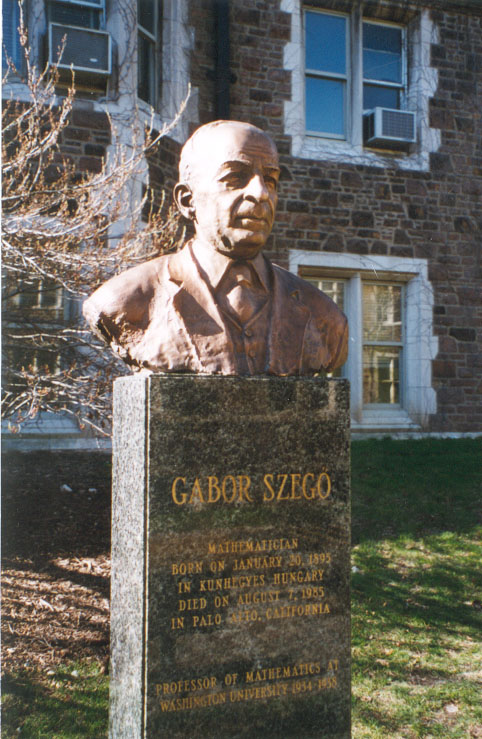
Facing north in the courtyard between Cupples I and Crow Halls is a bust of mathematician Gabor Szego.
A native Hungarian Jew, Szego received his Ph.D. in Vienna in 1918. After teaching at the Technical School of Budapest and the University of Berlin, he went to the University of Koenigsberg where he was Professor of Mathematics from 1926 to 1934. He was forced out of his professorship at Koenigsberg by the Nazis.
Through personal and professional connections in St. Louis, he learned of Washington University. He came here in 1934 and taught for four years before joining the faculty at Stanford University.
Szego taught his first two years at the Washington University with the aid of a Rockefeller Foundation grant matched by funds from the St. Louis Emergency Committee in Aid of Displaced German Scholars. The second two years were funded by a local business and citizens committee. Because of the Great Depression, the University's budget was extremely tight. As a result, the University never was able to make an offer to Szego, whose leadership and wisdom directed the first four doctoral graduates in the Department of Mathematics in Arts and Sciences. He therefore was one of the most famous academicians ever to teach on a regular basis at Washington University without drawing a University paycheck.
Hungarian artist Gyofri Lajos created the bust in honor of Szego's career with the intent of placing it outdoors in Szego's hometown of Kunhegyes. He made two replicas of the original. It was decided that they should go to Washington and Stanford -- the only American institutions with which Szego was affiliated. The replica was installed at Washington University in 1997.